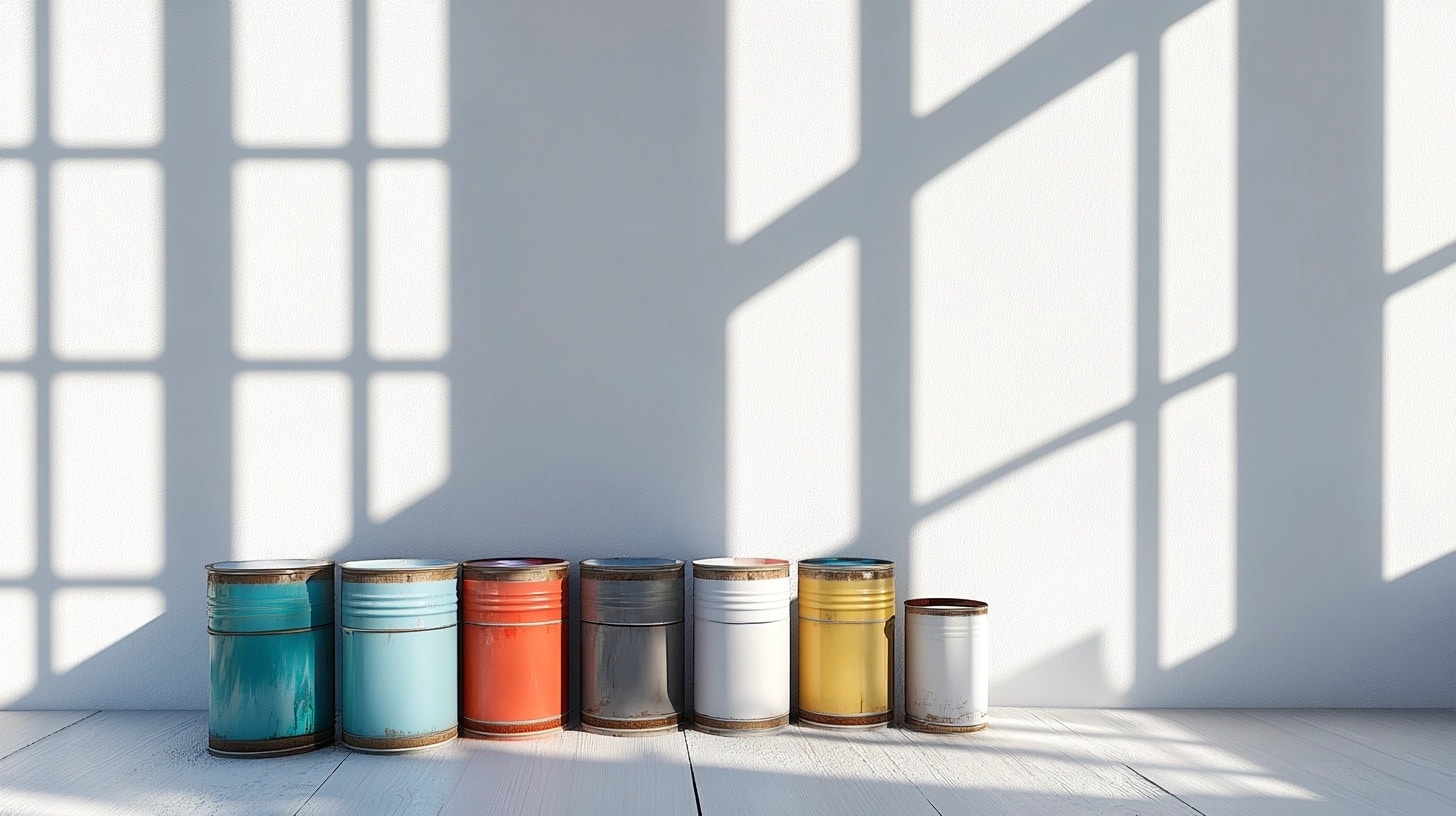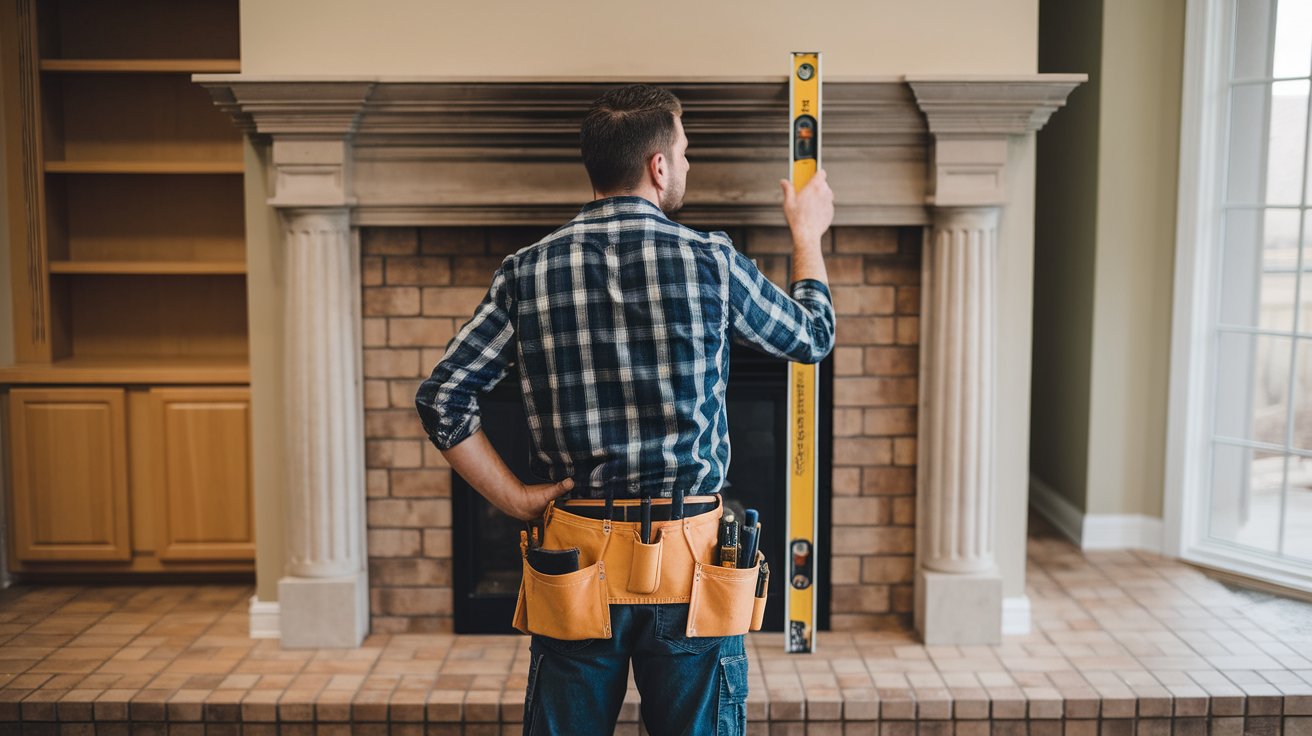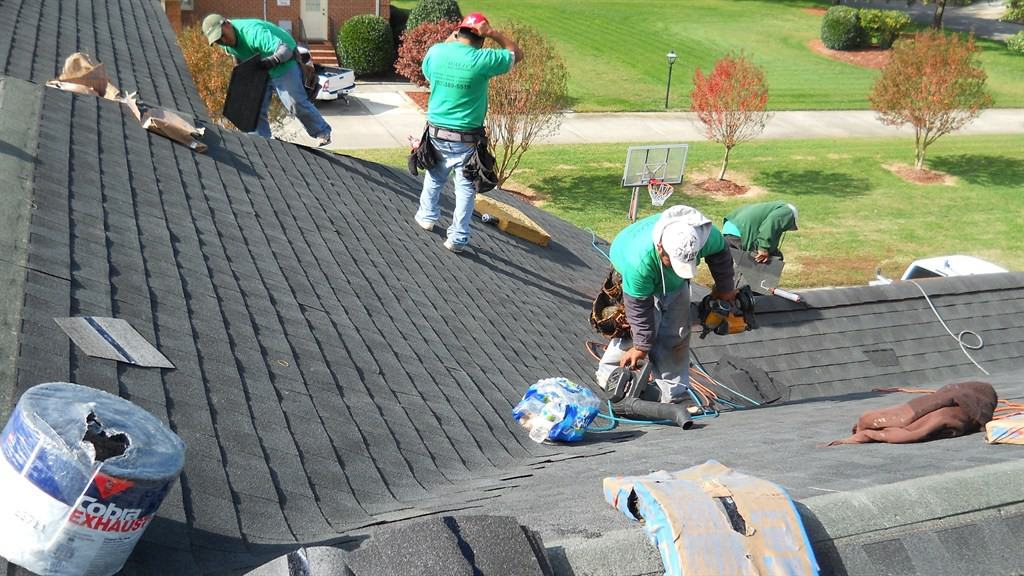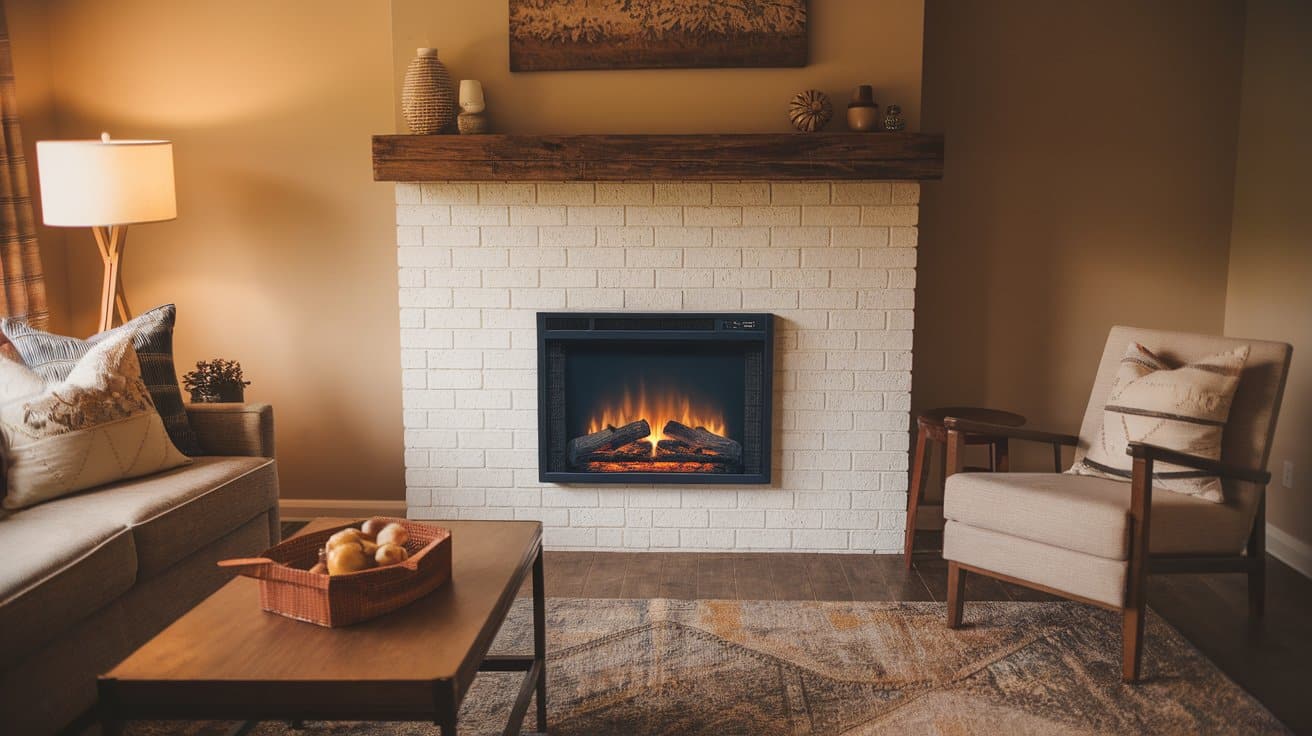How to Paint Window Frames Easily
I know how frustrating it is to see old, peeling window frames that make your home look tired. Those chipped frames can let in drafts and moisture, leading to bigger problems.
Here’s the good news – you don’t need to hire professionals to fix this. I’ve painted dozens of window frames myself, and I’ll guide you through each step to make your windows shine.
In this post, I’ll share a simple process to paint your window frames. You’ll learn how to prepare the surface properly, choose the right tools, paint with clean lines, and achieve a smooth finish that lasts for years.
Step-by-Step Process to Paint Window Frames
Materials & Tools Needed
- Spray paint (primer and top coat)
- Screwdriver (cordless or manual)
- Safety knife
- Drop sheet or ram board
- Cleaning rags
- Masking tape
- Paper towels
- Safety equipment: Respirator mask, Safety glasses, Gloves
Stepwise Process to Follow
1. Remove Window Fittings
- Before starting, take clear photos of your window fittings
- Use your screwdriver to remove all handles and locks
- Place screws and fittings in a small container
- Label each fitting’s location if you have multiple windows
- Check for any stuck or rusty screws that might need extra care
2. Clean the Surface
- Start by dusting off loose dirt with a dry cloth
- Mix warm water with mild soap for deeper cleaning
- Wipe down every part of the frame with your cleaning solution
- Pay special attention to corners and grooves
- Use a separate clean cloth to dry the frame
- Wait until the frame is completely dry before moving forward
3. Protect Surrounding Areas
- Start by laying drop sheets on the floor
- Secure them with tape to prevent slipping
- Cover nearby furniture with additional sheets
- Apply masking tape along the edges of the glass
- Press down firmly on tape edges to prevent paint seepage
- Create protective “aprons” with paper towels
- Tape these aprons around the frame edges
- Double-check all covered areas for gaps
4. Apply Primer
- Put on your safety gear (mask, glasses, gloves)
- Work in a well-ventilated area
- Shake the primer can for at least one minute
- Test spray pattern on a piece of cardboard
- Start with the frame’s outer edges
- Keep the can 10-25 cm away from the surface
- Move-in steady, straight lines
- Apply thin, even coats
- Let each coat dry for 10-15 minutes
- Check primer instructions for total drying time
5. Paint Application
- Shake the paint can for a full minute
- Start in a corner to get a feel for the spray pattern
- Keep your arm moving while spraying
- Spray in one direction for each coat
- Apply the first coat very lightly
- Wait 20 minutes between coats
- Apply the second coat at a right angle to the first
- Check coverage and add a third coat if needed
- Look for any missed spots or uneven areas
- Fix any drips immediately with a clean brush
6. Remove Protection and Clean
- Wait until the paint is slightly tacky
- Pull the masking tape off at a 45-degree angle
- Remove it slowly to avoid paint peeling
- Take off paper towel aprons carefully
- Check for any paint spots on the glass
- Clean any marks with an appropriate solvent
- Remove drop sheets carefully
7. Final Touches
- Wait 24 hours before handling the frames
- Check that the paint has dried completely
- Reinstall all fittings and handles
- Test windows open and close smoothly
- Clean glass thoroughly
- Check for any touch-ups needed
- Take photos of your finished work

Approximate Investment to Paint Window Frames
| Item | Cost Range | Details |
|---|---|---|
| Paint (Oil-Based) | $20 – $50 per gallon | Covers 300-400 sq. ft. per gallon; lasts up to 10 years |
| Paint (Water-Based) | $15 – $40 per gallon | Covers 250-350 sq. ft. per gallon; lasts 5-7 years |
| Enamel Paint | $25 – $60 per gallon | Durable finish; ideal for high-traffic areas |
| Paint Brushes | $5 – $15 each | Standard sizes for detailed work; higher quality lasts longer |
| Small Rollers | $10 – $25 (set of rollers) | Includes frame and refill rollers for flat surfaces |
| Painter’s Tape | $5 – $10 per roll | Essential for masking edges |
| Drop Cloths/Plastic Sheeting | $5 – $20 | Protects floors and surrounding areas |
| Masking Paper/Film (for spray) | $10 – $25 per roll | For extensive prep when using spray paint |
| Mineral Spirits (for oil-based cleanup) | $8 – $15 per quart | Necessary for cleaning oil-based paint |
| Spray Paint (if using) | $4 – $10 per can | Fast application: 1-2 cans for small frames |
| Total Estimated Cost | $50 – $200+ | Varies based on paint type, tools, and number of windows |
This table gives an approximate cost range for different items needed to paint window frames, providing flexibility based on the chosen method and materials.
How to Choose the Right Paint

Let me share what I’ve learned from years of painting window frames. Picking the right paint makes all the difference in how your windows look and how long the finish lasts.
1. Types of Paint
| Type | Drying Time | Key Features | Cleanup | Durability |
|---|---|---|---|---|
| Oil-Based Paints | 24 hours | Excellent adhesion, long-lasting finish, good for varying weather, provides great surface coverage | Requires mineral spirits | It lasts up to 10 years |
| Water-Based Paints | 4-6 hours | It dries faster, lowers fumes, and is easier to clean, but it may need more coats for full coverage. | Soap and water | Lasts 5-7 years |
| Enamel Paints | Varies | It creates a hard, durable shell, resists water damage and daily wear, and keeps shine longer. | Depends on the base type | Handles wear better over time |
2. Color Selection Guide
| Color Type | Effect | Best For |
|---|---|---|
| Light Colors | It makes rooms appear larger, reflects more light, softens spaces, and works well in small rooms. | Small rooms, spaces needing more light |
| Dark Colors | It creates a bold, framed look, makes windows pop as artistic elements, and requires less frequent cleaning. | Large, well-lit rooms |
3. Matching Tips
- Coordinate with wall colors and window treatments.
- Sample paint on small areas and observe in various lighting conditions.
- Think about the room’s overall style and how window frames can enhance it.
- Neutral tones tend to have lasting appeal and work in many styles.
4. Practical Points
- Lighter colors show less dust, but darker colors hide minor marks better.
- Test samples in natural light for accurate color representation.
- Consider how your climate impacts paint durability.
- Factor in the resale value—neutral shades are typically safer.
Best Painting Techniques to Follow

Generally, there are three types of painting methods, such as:
1. Using a Brush
| Pros | Cons |
|---|---|
| Great for small frames | Takes more time |
| Full control over painting | It might leave brush marks |
| Reaches tight corners | Requires a steady hand |
| Basic tools needed | Can be tiring |
| Good for detailed work | Risk of drips |
| Less prep time |
2. Using a Roller
| Pros | Cons |
|---|---|
| Covers large areas quickly | Hard to use in corners |
| Provides a smooth finish | Might miss small spots |
| Less strain on the arm | Uses more paint |
| Ensures even spread of paint | Not good for detailed work |
| Ideal for flat surfaces | Requires special small rollers |
3. Using Spray Paint
| Pros | Cons |
|---|---|
| It provides a very smooth finish | Requires extensive masking |
| There is no risk of brush marks | Paint can drift |
| Quick application | More prep work is needed |
| Gets into small spaces easily | Higher cost |
| Ensures even coating | Weather dependent |
Step-by-Step Painting Process
1. First Coat Tips
- Start in the top corners
- Paint in one direction
- Use light pressure
- Keep wet edge
- Watch for drips
- Fix runs right away
- Let it dry fully
2. Between Coats
- Wait proper time
- Check the maker’s guide
- Feel surface first
- Look for tacky spots
- Clean any dust
- Fix any problems
- Plan next coat
3. Second Coat Method
- Paint across the first coat
- Use same pressure
- Check coverage
- Look for missed spots
- Keep steady pace
- Blend edges well
- Make it even
Drying Time Facts
1. Weather Effects
- Humid days need more time
- Cold slows drying
- Wind helps speed up
- Sun can dry too fast
- Rain delays work
- Check weather first
- Plan your time
2. Indoor Factors
- Airflow matters
- Room temp affects the time
- Use fans if needed
- Keep doors open
- Watch humidity
- Avoid dust
- Give extra time
My Top Tips
1. Pick Your Method Based On
- Frame size
- Your skill level
- Time you have
- Weather that day
- Frame material
2. For Best Results
- Work in good light
- Take breaks
- Check your work
- Keep tools clean
- Stay patient
- Follow each step
- Don’t rush
Remember: Each method works well if done right. I prefer spray paint for metal frames and brushes for wooden ones.
Your choice should match your comfort level and project needs.
Final Touch While Painting the Frames
After putting in all that work painting your window frames, the final steps are crucial for a lasting finish. I’ve learned these techniques through years of painting, and they make a real difference in the end result.
Removing Protection
1. Getting the Timing Right: The key to clean tape removal lies in timing. I’ve found that waiting until the paint is set but not fully hardened works best. Test the paint’s dryness by lightly touching an inconspicuous spot – it should feel dry to the touch but retain some freshness. Most paints reach this stage within 1-2 hours after the final coat, though humidity and temperature can change this timing.
2. Proper Tape Removal Technique: Start by pulling the tape away at a 45-degree angle, keeping your movement slow and steady. If you notice the paint starting to lift, try using a putty knife or razor blade to score the edge where the tape meets the paint. This extra step prevents the fresh paint from peeling away with the tape.
3. Managing Large Coverage Areas: When removing paper and plastic coverings, work from the top of your window frame downward. This prevents any loose paint or debris from falling onto freshly exposed areas. Keep your drop cloths in place until every bit of masking is removed, as this catches any paint flakes or dust that might fall during cleanup.
Cleaning Up Your Work Space
1. Caring for Your Painting Tools: Quality brushes and rollers deserve proper cleaning to extend their life. For water-based paints, rinse your tools under warm running water until they run clear. With oil-based paints, use the appropriate solvent, then wash with warm soapy water. Shape your brush bristles while they’re still wet, and store them either hanging or lying flat to maintain their shape.
2. Responsible Disposal Methods: Paint disposal requires careful attention to local regulations. Before disposal, let leftover paint dry completely in the can or mix it with cat litter to solidify it. After shaking your good drop cloths out well outdoors, keep them for future projects. Collect all used masking materials in heavy-duty garbage bags to prevent paint dust from spreading.
3. Final Area Clean-Up: Take time to inspect all surfaces around your work area. Wipe down any nearby surfaces with a damp cloth to remove paint dust. Check the window glass for paint spots, using a razor blade scraper for stubborn specks. Look for paint drips on the floor or windowsill that might have gone unnoticed during painting.
Maintenance for Long-Lasting Results
1. First Week of Care: Your newly painted frames need gentle treatment in their first week. Keep the windows slightly open when possible to maintain good airflow. Avoid touching or cleaning the frames during this time, as the paint continues to cure even after it feels dry to the touch. If you spot any dust, use a soft feather duster rather than a cloth.
2. Ongoing Maintenance Schedule: Make frame care part of your regular cleaning routine. Use a soft, slightly damp cloth for weekly dusting. When you notice marks or spots, clean them promptly with mild soap and water, being careful not to scrub too hard. Regular inspection helps you catch any wear and tear before it becomes a bigger problem.
3. Professional Touch-Up Strategies: Keep detailed records of your paint type and color for future touch-ups. Store leftover paint in an airtight container in a cool, dry place. When minor damage occurs, clean the area thoroughly before applying touch-up paint with a small artist’s brush. Build up thin layers rather than trying to cover the spot with one thick coat.
4. Seasonal Maintenance Tips: Check your window frames thoroughly each spring and fall. During your seasonal window cleaning, look for signs of wear or damage. Pay special attention to the bottom rails, where water might collect. Address any signs of peeling or cracking promptly to prevent bigger problems from developing.
Conclusion
I’ve shared my tested methods for choosing paint, applying it properly, and maintaining your frames.
Why does this matter? Well-painted window frames not only make your home look better but also protect your windows from damage and save you money on professional repairs.
If you’re ready to start your project, begin with one window to build your confidence. Remember to save this guide for reference, and stock up on your supplies first.
Do you have questions about painting your specific window frames? Leave a comment below, and I’ll help you out!
Fun Fact: The practice of painting window frames white began in the 1700s when Dutch settlers mixed milk, lime, and linseed oil to create a bright paint that helped reflect more light into their homes.







